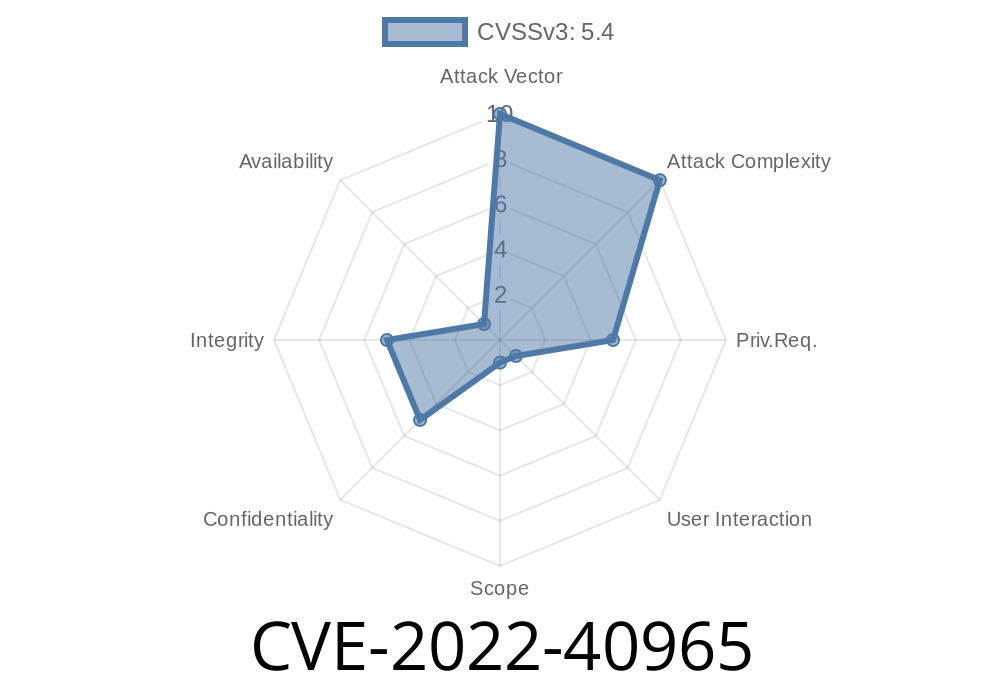DIAEnergie, a popular energy management software, is vulnerable to a stored cross-site scripting (XSS) attack through the PostEnergyType API in its versions prior to v1.9.01.002. This vulnerability, identified as CVE-2022-40965, enables an attacker to inject malicious scripts into the web application, which are stored and executed when a victim interacts with the application. It could lead to unauthorized data access, account takeover, and other security breaches. In this post, we will take a closer look at the exploit details, affected components, and recommendations for mitigating the vulnerability.
Exploit Details
The stored XSS vulnerability is introduced through the PostEnergyType API, which is responsible for handling the input of new energy types in the system. Due to improper input validation and lack of output encoding, an attacker can take advantage of this flaw by sending malicious JavaScript payload in an HTTP POST request to the API. This payload then gets stored in the database and executed whenever the affected energy type is viewed or processed by other users.
Here is an example of a malicious HTTP POST request that exploits the vulnerability
POST /api/PostEnergyType HTTP/1.1
Host: vulnerable_host
Content-Type: application/json
{
"energyTypeId": "1",
"energyType": "<script>alert('XSS')</script>"
}
In this example, the attacker injects a simple JavaScript payload that shows an alert with the message 'XSS.' However, more sophisticated attacks can involve stealing session tokens, accessing sensitive data, or executing arbitrary code in the context of the web application.
Affected Components
The vulnerability affects DIAEnergie software versions up to and including v1.9.00.001. Users running any of these versions should consider updating their software to the patched version v1.9.01.002 immediately.
For more information on CVE-2022-40965, you can refer to the following original references
1. Vulnerability Details: CVE-2022-40965 at NIST NVD
2. Vendor Advisory: DIAEnergie Security Update v1.9.01.002
(Note: Replace the above link with the actual vendor advisory link)
To mitigate this vulnerability, users should take the following steps
1. Update to the latest version: Users running vulnerable versions of DIAEnergie should update their software to v1.9.01.002, which includes a fix for the vulnerability.
2. Proper input validation: All user inputs should be treated as untrusted and should be validated against a whitelist of allowed characters before processing.
3. Apply output encoding: Ensure that output encoding is applied to all user-supplied data before displaying it on the web page to prevent the execution of malicious scripts.
4. Regular security audit: Conduct regular security audits to identify and fix any vulnerabilities in your web application.
Conclusion
It is crucial to stay updated on the latest threats and vulnerabilities, especially those affecting widely used software like DIAEnergie. Users should ensure that they are running the latest, patched version of the software and follow security best practices to prevent exploitation of such vulnerabilities. Prompt action is required to protect your valuable data and maintain your organization's reputation in the face of potential security breaches.
Timeline
Published on: 10/27/2022 21:15:00 UTC
Last modified on: 10/28/2022 18:36:00 UTC
